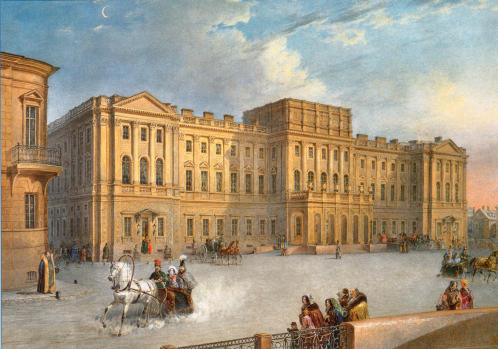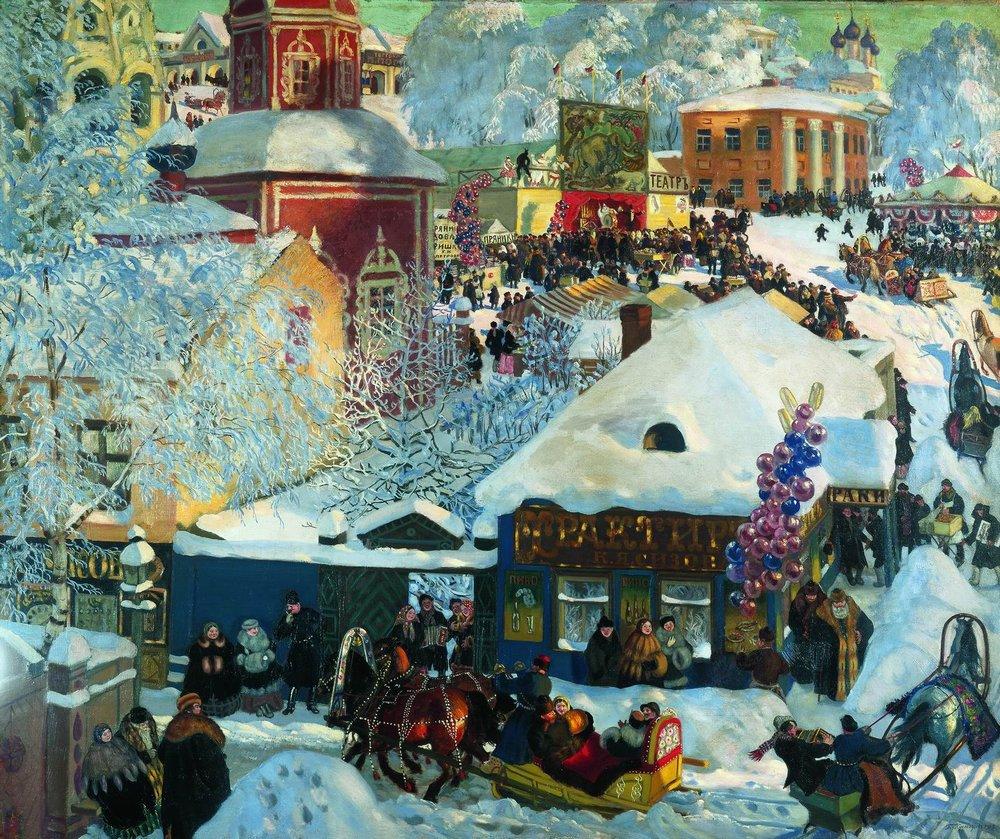|
Ceremonial Sitting Of The State Council On 7 May 1901 Marking The Centenary Of Its Foundation
''Ceremonial Sitting of the State Council on 7 May 1901 Marking the Centenary of its Foundation'' (russian: ąóąŠčƹȹĄčüčéą▓ąĄąĮąĮąŠąĄ ąĘą░čüąĄą┤ą░ąĮąĖąĄ ąōąŠčüčāą┤ą░čĆčüčéą▓ąĄąĮąĮąŠą│ąŠ čüąŠą▓ąĄčéą░ 7 ą╝ą░čÅ 1901 ą│ąŠą┤ą░ ą▓ ą┤ąĄąĮčī čüč鹊ą╗ąĄčéąĮąĄą│ąŠ čÄą▒ąĖą╗ąĄčÅ čüąŠ ą┤ąĮčÅ ąĄą│ąŠ čāčćčĆąĄąČą┤ąĄąĮąĖčÅ) is an oil on canvas painting of 1903 by the Russian artist Ilya Repin. The State Council (Russian Empire) had its centenary at the Mariinsky Palace marked by Repin's work. Repin quickly sketched while in the room, and later expanded this into the full painting with the aid of assistants Boris Kustodiev and Ivan Kulikov. The photorealism of the painting was noted in its time. The painting is in the collection of the Russian Museum, Saint Petersburg Saint Petersburg ( rus, links=no, ąĪą░ąĮą║čé-ą¤ąĄč鹥čĆą▒čāčĆą│, a=Ru-Sankt Peterburg Leningrad Petrograd Piter.ogg, r=Sankt-Peterburg, p=╦łsankt p╩▓╔¬t╩▓╔¬r╦łburk), formerly known as Petrograd (1914ŌĆō1924) and later Leningra ... [...More Info...] [...Related Items...] OR: [Wikipedia] [Google] [Baidu] |
Ivan Kulikov
Ivan Semyonovich Kulikov (Russian: ąśą▓ą░ąĮ ąĪąĄą╝čæąĮąŠą▓ąĖčć ąÜčāą╗ąĖą║ąŠą▓; 13 April 1875 in Murom ŌĆō 15 December 1941 in Murom) was a Russian painter, primarily of portraits and genre scenes. Biography He was born to a peasant family that had recently moved to Murom from a rural village. His father was a roofer and house painter who headed a small cooperative that built and repaired numerous structures there. In 1893, a local teacher became impressed with his drawing skills an introduced him to Alexander Morozov, who spent the summers painting in Murom. Morozov was impressed as well and advised his parents to enroll him in the drawing school at the Imperial Society for the Encouragement of the Arts.Brief biography and appreciation @ the Museum of [...More Info...] [...Related Items...] OR: [Wikipedia] [Google] [Baidu] |
Ilya Repin
Ilya Yefimovich Repin (russian: ąśą╗čīčÅ ąĢčäąĖą╝ąŠą▓ąĖčć ąĀąĄą┐ąĖąĮ, translit=Il'ya Yefimovich Repin, p=╦łr╩▓ep╩▓╔¬n); fi, Ilja Jefimovit┼Ī Repin ( ŌĆō 29 September 1930) was a Russian painter, born in what is now Ukraine. He became one of the most renowned artists in Russia during the 19th century. His major works include '' Barge Haulers on the Volga'' (1873), '' Religious Procession in Kursk Province'' (1880ŌĆō1883), ''Ivan the Terrible and His Son Ivan'' (1885); and '' Reply of the Zaporozhian Cossacks'' (1880ŌĆō1891). He is also known for the revealing portraits he made of the leading literary and artistic figures of his time, including Mikhail Glinka, Modest Mussorgsky, Pavel Tretyakov and especially Leo Tolstoy, with whom he had a long friendship. Repin was born in Chuguyev, in Kharkov Governorate of the Russian Empire. His father had served in an Uhlan Regiment in the Russian army, and then sold horses. Repin began painting icons at age sixteen. He failed at his fi ... [...More Info...] [...Related Items...] OR: [Wikipedia] [Google] [Baidu] |
Oil Painting
Oil painting is the process of painting with pigments with a medium of drying oil as the binder. It has been the most common technique for artistic painting on wood panel or canvas for several centuries, spreading from Europe to the rest of the world. The advantages of oil for painting images include "greater flexibility, richer and denser colour, the use of layers, and a wider range from light to dark". But the process is slower, especially when one layer of paint needs to be allowed to dry before another is applied. The oldest known oil paintings were created by Buddhist artists in Afghanistan and date back to the 7th century AD. The technique of binding pigments in oil was later brought to Europe in the 15th century, about 900 years later. The adoption of oil paint by Europeans began with Early Netherlandish painting in Northern Europe, and by the height of the Renaissance, oil painting techniques had almost completely replaced the use of tempera paints in the majori ... [...More Info...] [...Related Items...] OR: [Wikipedia] [Google] [Baidu] |
Saint Petersburg
Saint Petersburg ( rus, links=no, ąĪą░ąĮą║čé-ą¤ąĄč鹥čĆą▒čāčĆą│, a=Ru-Sankt Peterburg Leningrad Petrograd Piter.ogg, r=Sankt-Peterburg, p=╦łsankt p╩▓╔¬t╩▓╔¬r╦łburk), formerly known as Petrograd (1914ŌĆō1924) and later Leningrad (1924ŌĆō1991), is the second-largest city in Russia. It is situated on the Neva River, at the head of the Gulf of Finland on the Baltic Sea, with a population of roughly 5.4 million residents. Saint Petersburg is the fourth-most populous city in Europe after Istanbul, Moscow and London, the most populous city on the Baltic Sea, and the world's northernmost city of more than 1 million residents. As Russia's Imperial capital, and a historically strategic port, it is governed as a federal city. The city was founded by Tsar Peter the Great on 27 May 1703 on the site of a captured Swedish fortress, and was named after apostle Saint Peter. In Russia, Saint Petersburg is historically and culturally associated wi ... [...More Info...] [...Related Items...] OR: [Wikipedia] [Google] [Baidu] |
State Russian Museum
The State Russian Museum (russian: ąōąŠčüčāą┤ą░čĆčüčéą▓ąĄąĮąĮčŗą╣ ąĀčāčüčüą║ąĖą╣ ą╝čāąĘąĄą╣), formerly the Russian Museum of His Imperial Majesty Alexander III (russian: ąĀčāčüčüą║ąĖą╣ ą£čāąĘąĄą╣ ąśą╝ą┐ąĄčĆą░č鹊čĆą░ ąÉą╗ąĄą║čüą░ąĮą┤čĆą░ III), on Arts Square in Saint Petersburg, is the world's largest depository of Russian fine art. It is also one of the largest art museums in the world with total area over 30 hectares. In 2021 it attracted 2,260,231 visitors, ranking second on list of most-visited art museums in the world. Creation The museum was established on April 13, 1895, upon enthronement of the emperor Nicholas II to commemorate his father, Alexander III. Its original collection was composed of artworks taken from the Hermitage Museum, Alexander Palace, and the Imperial Academy of Arts. The task to restructure the interiors according to the need of future exposition was imposed on Vasily Svinyin. The grand opening took place on the 17 of March, 1898. After the Russia ... [...More Info...] [...Related Items...] OR: [Wikipedia] [Google] [Baidu] |
State Council (Russian Empire)
The State Council ( rus, ąōąŠčüčāą┤ą░╠üčĆčüčéą▓ąĄąĮąĮčŗą╣ čüąŠą▓ąĄ╠üčé, p=╔Ī╔Ös╩Ŗ╦łdarstv╩▓╔¬n(╦É)╔©j s╔É╦łv╩▓et) was the supreme state advisory body to the Tsar in Imperial Russia. From 1906, it was the upper house of the parliament under the Russian Constitution of 1906. 18th century Early Tsars' Councils were small and dealt primarily with external politics. Peter I of Russia introduced the Secret Council. Catherine I of Russia introduced the Supreme Secret Council. Its role varied during different reigns. Peter III of Russia created the Imperial Council on 20 May 1762 ("ąśą╝ą┐ąĄčĆą░č鹊čĆčüą║ąĖą╣ ąĪąŠą▓ąĄčé"), or, formally "The Council at the Highest Court" ("ąĪąŠą▓ąĄčé ą┐čĆąĖ ą▓čŗčüąŠčćą░ą╣čłąĄą╝ ą┤ą▓ąŠčĆąĄ"). It was dismissed shortly after the succession of Catherine II of Russia. 1810ŌĆō1906 The State Council was established by Alexander I of Russia in 1810 as part of Speransky's reforms. Although envisaged by Speransky as the upper chamber of the Russian parlia ... [...More Info...] [...Related Items...] OR: [Wikipedia] [Google] [Baidu] |
Mariinsky Palace
Mariinsky Palace (), also known as Marie Palace, was the last neoclassical Imperial residence to be constructed in Saint Petersburg. It was built between 1839 and 1844, designed by the court architect Andrei Stackenschneider. It houses the city's Legislative Assembly. Location The palace stands on the south side of Saint Isaac's Square, just across the Blue Bridge from Saint Isaac's Cathedral. The site had been previously owned by Zakhar Chernyshev, and contained his home designed by Jean-Baptiste Vallin, which was built between 1762 and 1768. Chernyshev occasionally lent his home to foreign dignitaries visiting the capital, such as Louis Henri, Prince of Cond├®. From 1825 to 1839, the Chernyshev Palace, as it was then known, was the site of the , where Mikhail Lermontov was known to have studied for two years. The palace was demolished in 1839, and materials were reused in the construction of the Mariinsky Palace. Conception and style The palace was conceived by ... [...More Info...] [...Related Items...] OR: [Wikipedia] [Google] [Baidu] |
Boris Kustodiev
Boris Mikhaylovich Kustodiev (russian: ąæąŠčĆąĖ╠üčü ą£ąĖčģą░╠üą╣ą╗ąŠą▓ąĖčć ąÜčāčüč鹊╠üą┤ąĖąĄą▓; ŌĆō 28 May 1927) was a Russian and Soviet painter and stage designer. Early life Boris Kustodiev was born in Astrakhan into the family of a professor of philosophy, history of literature, and logic at the local theological seminary. His father died young, and all financial and material burdens fell on his mother's shoulders. The Kustodiev family rented a small wing in a rich merchant's house. It was there that the boy's first impressions were formed of the way of life of the provincial merchant class. The artist later wrote, "The whole tenor of the rich and plentiful merchant way of life was there right under my nose... It was like something out of an Ostrovsky play." The artist retained these childhood observations for years, recreating them later in oils and water-colours. Art studies Between 1893 and 1896, Kustodiev studied in theological seminary and took private art lessons ... [...More Info...] [...Related Items...] OR: [Wikipedia] [Google] [Baidu] |
Russian Museum
The State Russian Museum (russian: ąōąŠčüčāą┤ą░čĆčüčéą▓ąĄąĮąĮčŗą╣ ąĀčāčüčüą║ąĖą╣ ą╝čāąĘąĄą╣), formerly the Russian Museum of His Imperial Majesty Alexander III (russian: ąĀčāčüčüą║ąĖą╣ ą£čāąĘąĄą╣ ąśą╝ą┐ąĄčĆą░č鹊čĆą░ ąÉą╗ąĄą║čüą░ąĮą┤čĆą░ III), on Arts Square in Saint Petersburg, is the world's largest depository of Russian fine art. It is also one of the largest art museums in the world with total area over 30 hectares. In 2021 it attracted 2,260,231 visitors, ranking second on list of most-visited art museums in the world. Creation The museum was established on April 13, 1895, upon enthronement of the emperor Nicholas II to commemorate his father, Alexander III. Its original collection was composed of artworks taken from the Hermitage Museum, Alexander Palace, and the Imperial Academy of Arts. The task to restructure the interiors according to the need of future exposition was imposed on Vasily Svinyin. The grand opening took place on the 17 of March, 1898. After the Ru ... [...More Info...] [...Related Items...] OR: [Wikipedia] [Google] [Baidu] |
1903 Paintings
Nineteen or 19 may refer to: * 19 (number), the natural number following 18 and preceding 20 * one of the years 19 BC, AD 19, 1919, 2019 Films * ''19'' (film), a 2001 Japanese film * ''Nineteen'' (film), a 1987 science fiction film Music * 19 (band), a Japanese pop music duo Albums * ''19'' (Adele album), 2008 * ''19'', a 2003 album by Alsou * ''19'', a 2006 album by Evan Yo * ''19'', a 2018 album by MHD * ''19'', one half of the double album '' 63/19'' by Kool A.D. * ''Number Nineteen'', a 1971 album by American jazz pianist Mal Waldron * ''XIX'' (EP), a 2019 EP by 1the9 Songs * "19" (song), a 1985 song by British musician Paul Hardcastle. * "Nineteen", a song by Bad4Good from the 1992 album ''Refugee'' * "Nineteen", a song by Karma to Burn from the 2001 album ''Almost Heathen''. * "Nineteen" (song), a 2007 song by American singer Billy Ray Cyrus. * "Nineteen", a song by Tegan and Sara from the 2007 album '' The Con''. * "XIX" (song), a 2014 song by Slipknot. ... [...More Info...] [...Related Items...] OR: [Wikipedia] [Google] [Baidu] |
Paintings By Ilya Repin
Painting is the practice of applying paint, pigment, color or other medium to a solid surface (called the "matrix" or "support"). The medium is commonly applied to the base with a brush, but other implements, such as knives, sponges, and airbrushes, can be used. In art, the term ''painting ''describes both the act and the result of the action (the final work is called "a painting"). The support for paintings includes such surfaces as walls, paper, canvas, wood, glass, lacquer, pottery, leaf, copper and concrete, and the painting may incorporate multiple other materials, including sand, clay, paper, plaster, gold leaf, and even whole objects. Painting is an important form in the visual arts, bringing in elements such as drawing, composition, gesture (as in gestural painting), narration (as in narrative art), and abstraction (as in abstract art). Paintings can be naturalistic and representational (as in still life and landscape painting), photographic, abstract, narrative, sy ... [...More Info...] [...Related Items...] OR: [Wikipedia] [Google] [Baidu] |







